To capture stunning aerial shots, you'll need to master seven essential camera settings. Start with a high shutter speed to freeze motion and maintain sharpness. Shoot in RAW format for maximum post-processing flexibility. Use balanced ISO settings to manage noise while maintaining image quality. Switch to manual focus for precise control over your focal points. Choose a wide aperture to maximize depth of field in landscapes. Adjust exposure compensation to handle varying light conditions at altitude. Finally, optimize your white balance for accurate color capture in different atmospheric conditions. Mastering these settings will elevate your aerial photography to new heights.
Key Takeaways
- Use a high shutter speed (at least 1/1000th of a second) to capture sharp, clear images and compensate for vibrations.
- Adjust exposure compensation based on altitude and lighting conditions, starting with -1/3 or -2/3 EV.
- Shoot in RAW format for maximum editing flexibility and better detail preservation in post-processing.
- Optimize white balance settings according to lighting conditions, using presets or custom adjustments for accurate colors.
- Set a wide aperture (f/8 or higher) to maximize depth of field for sharp landscapes in aerial photography.
High Shutter Speed

One of the most essential settings for aerial photography is a high shutter speed. When you're shooting from a moving aircraft or drone, you'll need to freeze motion to capture sharp, clear images. Aim for a shutter speed of at least 1/1000th of a second, or even faster if possible.
Higher shutter speeds help compensate for vibrations and movement, ensuring your aerial shots remain crisp and detailed. They're particularly vital when photographing landscapes, cityscapes, or any subject with fine details you want to preserve.
Keep in mind that increasing your shutter speed will reduce the amount of light entering your camera. To maintain proper exposure, you'll need to adjust your ISO or aperture accordingly.
In bright daylight conditions, this usually isn't an issue. However, in low light situations, you may need to compromise by slightly lowering your shutter speed or increasing your ISO.
RAW Format Shooting

When shooting aerial photos, you'll want to capture in RAW format to preserve maximum editing flexibility.
RAW files retain all the data from your camera's sensor, allowing you to adjust exposure, white balance, and other settings without degrading image quality.
Preserve Editing Flexibility
Invariably, shooting in RAW format is essential for preserving editing flexibility in aerial photography. RAW files contain all the data captured by your camera's sensor, giving you maximum control over the final image.
When you're shooting from the air, you'll often encounter challenging lighting conditions and rapidly changing scenes. RAW format allows you to make significant adjustments in post-processing without sacrificing image quality.
By preserving editing flexibility, you'll be able to:
- Correct exposure issues, especially in high-contrast aerial scenes
- Fine-tune white balance to accurately represent the colors in your shots
- Recover details in highlights and shadows that might be lost in compressed formats
- Apply noise reduction more effectively, vital for high-ISO aerial shots
Maximize Image Quality
To maximize image quality in aerial photography, you'll want to shoot in RAW format. This file type captures all the data from your camera's sensor, giving you the highest quality images possible. Unlike JPEG, which compresses and discards some information, RAW preserves every detail, allowing for extensive post-processing without degrading the image.
When shooting in RAW, you'll have greater control over white balance, exposure, and color correction. This is particularly useful in aerial photography, where lighting conditions can change rapidly. You'll be able to recover details in highlights and shadows that might be lost in JPEG format.
Set your camera to its highest resolution and lowest ISO setting possible for the best image quality. Use a fast shutter speed to minimize motion blur, typically 1/1000th of a second or faster.
Choose an aperture that balances depth of field with sharpness, usually between f/4 and f/8. Enable any in-camera stabilization features to further reduce blur.
Balanced ISO Settings

Your camera's ISO setting plays an essential role in achieving crisp aerial shots. It's vital to strike a balance between noise reduction and shutter speed.
In aerial photography, you'll often need faster shutter speeds to combat motion blur, but increasing ISO can introduce unwanted noise. Start with the lowest ISO possible for the lighting conditions, typically 100 or 200 in daylight.
As light decreases or when you need faster shutter speeds, gradually increase your ISO. However, be cautious not to push it too high, as this can degrade image quality. Modern cameras can often handle ISOs up to 1600 or even 3200 without significant noise, but test your equipment's limits beforehand.
Consider these factors when adjusting ISO for aerial shots:
- Available light and time of day
- Desired shutter speed for sharp images
- Your camera's noise performance at different ISO levels
- The intended use of the final image (e.g., large prints vs. web display)
Manual Focus Mode

Manual focus mode often proves invaluable for aerial photography, especially when shooting from moving platforms like helicopters or drones. It gives you precise control over your focal point, ensuring sharp images even in challenging conditions. When using manual focus, set your lens to infinity focus for distant landscapes or adjust as needed for closer subjects.
To master manual focus for aerial shots:
- Pre-focus before takeoff
- Use your camera's magnification feature
- Practice with stationary subjects first
- Utilize focus peaking if available
Here's a quick reference guide for manual focus in different aerial scenarios:
| Scenario | Focus Distance | Aperture | Shutter Speed |
|---|---|---|---|
| Cityscape | Infinity | f/8 | 1/1000s |
| Mountain Range | Infinity | f/11 | 1/500s |
| Beach Coastline | Near Infinity | f/5.6 | 1/2000s |
| Low Altitude Details | Variable | f/4 | 1/4000s |
Wide Aperture Selection

When shooting aerial photos, you'll want to contemplate your aperture selection carefully.
By choosing a wide aperture, you can maximize the depth of field, ensuring more of your landscape is in focus from foreground to background.
Conversely, you might opt for a narrower aperture to intentionally blur background elements, creating a sense of depth and drawing attention to specific parts of your aerial composition.
Maximizing Depth of Field
How can you guarantee every detail in your aerial shot is crystal clear? The key lies in maximizing your depth of field. Unlike the previous section on wide aperture selection, you'll want to use a narrow aperture (higher f-number) to achieve a greater range of focus from foreground to background.
To achieve maximum depth of field in your aerial shots:
- Set your aperture to f/8 or higher, depending on your lens and shooting conditions
- Use a wider angle lens to naturally increase depth of field
- Focus about one-third into the scene (hyperfocal distance) for best sharpness
- Increase your ISO if necessary to maintain a fast shutter speed
Blurring Background Elements
While maximizing depth of field can create sharp aerial landscapes, there's also value in selectively blurring background elements. To achieve this effect, you'll want to use a wide aperture setting (low f-number) on your camera. This technique can help draw attention to specific subjects in your aerial shots by creating a shallow depth of field.
Start by selecting an aperture between f/2.8 and f/5.6, depending on your lens capabilities. These wider apertures will blur the background, making your main subject stand out. When shooting from the air, focus on a prominent feature in your frame, such as a building, landmark, or natural formation. The surrounding elements will then become pleasantly out of focus, adding depth to your image.
Remember that using a wide aperture means less light enters the camera, so you may need to adjust your shutter speed or ISO to compensate. In low-light conditions, consider increasing your ISO or using a slower shutter speed, but be cautious of camera shake when shooting from a moving aircraft.
Experiment with different aperture settings to find the right balance between subject sharpness and background blur for your aerial compositions.
Exposure Compensation Adjustment

Three critical factors influence exposure compensation in aerial photography: altitude, lighting conditions, and subject matter. As you ascend, the light intensity often increases, potentially overexposing your images. To counteract this, you'll need to adjust your exposure compensation accordingly. Start by setting it to -1/3 or -2/3 EV and fine-tune based on your camera's histogram.
When shooting in bright conditions, like midday sun, you may need to decrease exposure even further. Conversely, during golden hour or in overcast weather, you might increase it slightly. Always consider your subject matter too. Bright surfaces like snow or water may require more negative compensation.
Here are key points to remember when adjusting exposure compensation:
- Use your camera's histogram as a guide
- Bracket your shots for insurance
- Pay attention to highlight warnings
- Adjust in small increments (1/3 EV steps)
Don't be afraid to experiment with different settings. What works for one scene may not work for another.
White Balance Optimization

Optimizing white balance is essential for capturing accurate colors in aerial photography. When shooting from above, atmospheric conditions can greatly affect color temperature, leading to unwanted blue or orange casts in your images. To combat this, you'll need to adjust your camera's white balance settings.
Start by selecting the appropriate white balance preset for your lighting conditions. If you're unsure, use the auto white balance (AWB) setting as a starting point. For more precise control, consider using a custom white balance by photographing a neutral gray card or white balance target before your flight.
Here's a quick reference guide for common aerial shooting scenarios:
| Lighting Condition | Recommended WB Setting | Kelvin Range |
|---|---|---|
| Sunny Day | Daylight | 5200-5600K |
| Cloudy/Overcast | Cloudy | 6000-6500K |
| Sunset/Sunrise | Shade | 7000-8000K |
| Blue Sky | Custom | 6500-7500K |
Frequently Asked Questions
How Do I Protect My Camera Gear During Aerial Photography Flights?
To protect your camera gear during aerial flights, you'll want to use padded cases, secure mounts, and lens filters. Keep your equipment strapped in and easily accessible. Don't forget to insure your gear for added peace of mind.
What Are the Legal Requirements for Drone Photography in Different Countries?
You'll find drone photography laws vary widely by country. You should always research local regulations before flying. Common rules include registration, altitude limits, no-fly zones, and pilot certification. Don't forget to respect privacy and safety guidelines too.
How Can I Reduce Camera Shake When Shooting From a Moving Aircraft?
You'll want to use a fast shutter speed, image stabilization, and a secure mounting system. Keep your camera steady by bracing against the aircraft's frame. If possible, use a gyro-stabilized mount for the smoothest shots.
Which Lenses Are Best Suited for Aerial Photography?
You'll want to contemplate wide-angle lenses for capturing expansive landscapes, or telephoto lenses for detailed shots. A versatile zoom lens, like a 24-70mm, can be ideal. Don't forget to pack a polarizing filter too.
How Do I Plan My Flight Path for Optimal Aerial Shots?
To plan your flight path for ideal aerial shots, you'll want to scout locations beforehand, consider lighting conditions, and map out key points of interest. Use flight planning apps to visualize your route and make certain you're following local regulations.
In Summary
You've now got the key camera settings for breathtaking aerial photography. Remember, practice makes perfect. Don't be afraid to experiment with these settings in different conditions. As you gain experience, you'll develop an intuitive feel for what works best. Keep pushing your limits, and you'll soon be capturing stunning aerial shots that'll take your audience's breath away. So grab your camera, take to the skies, and let your creativity soar!
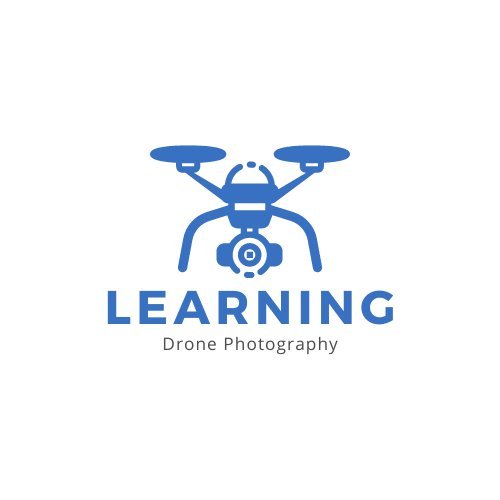
As educators and advocates for responsible drone use, we’re committed to sharing our knowledge and expertise with aspiring aerial photographers.
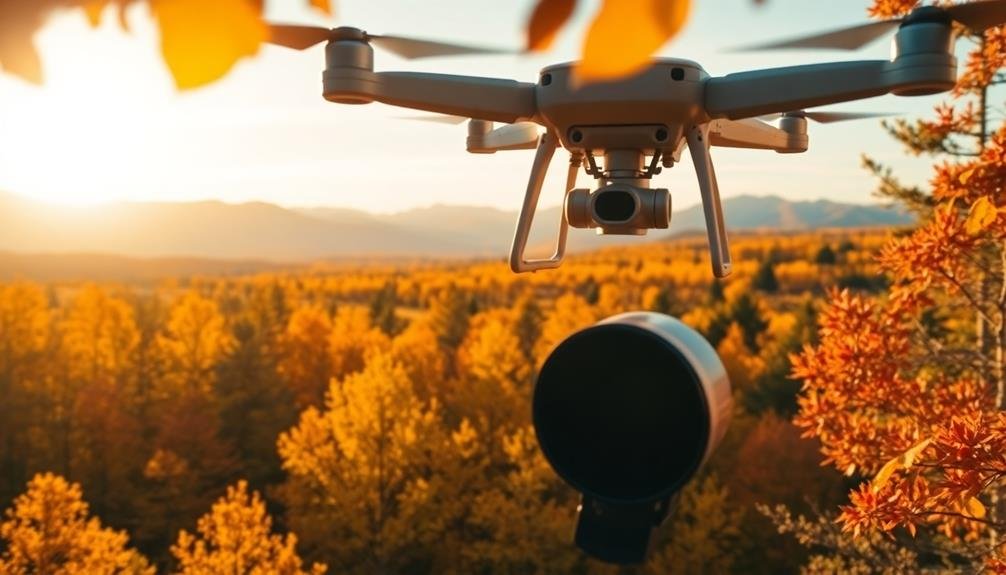
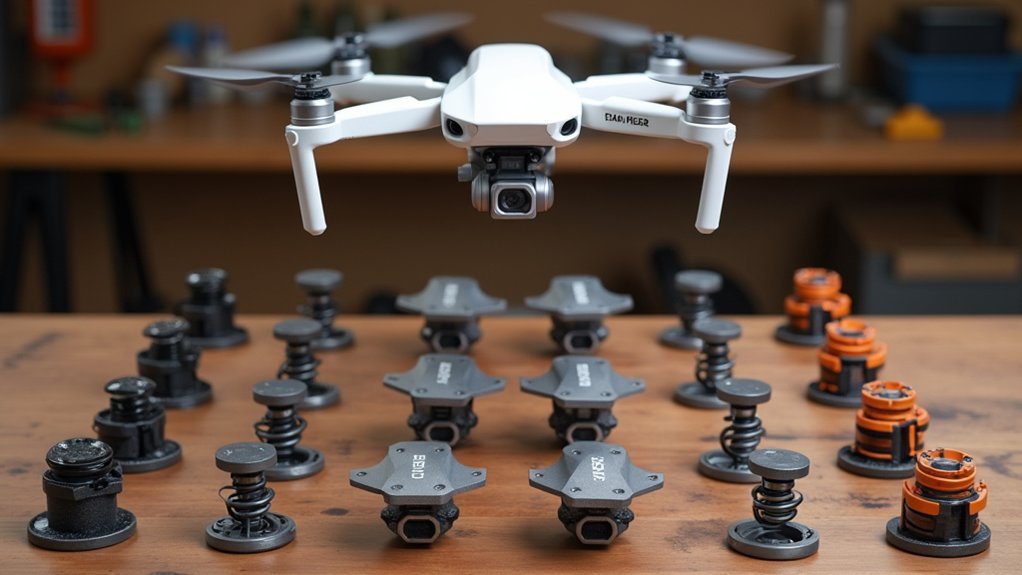
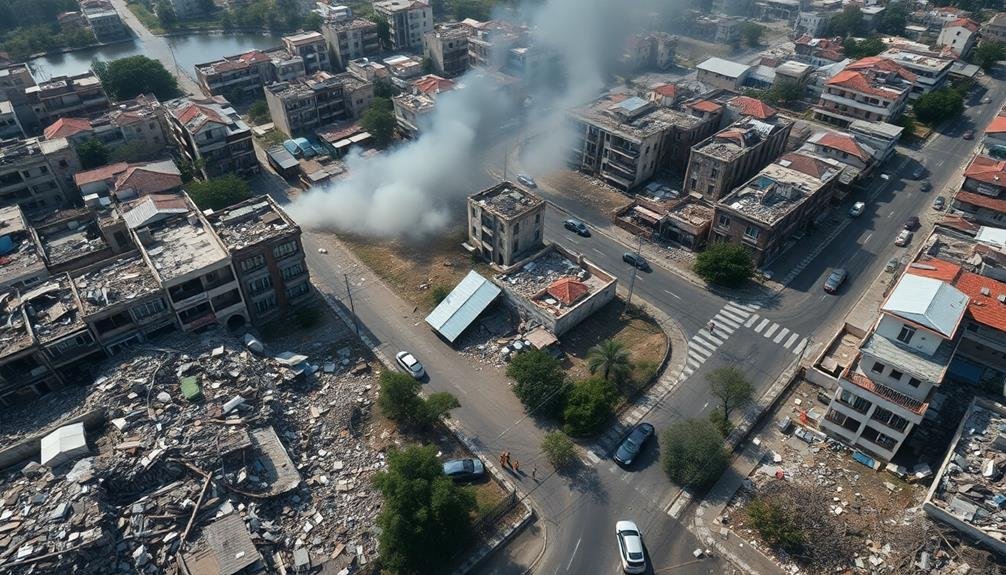
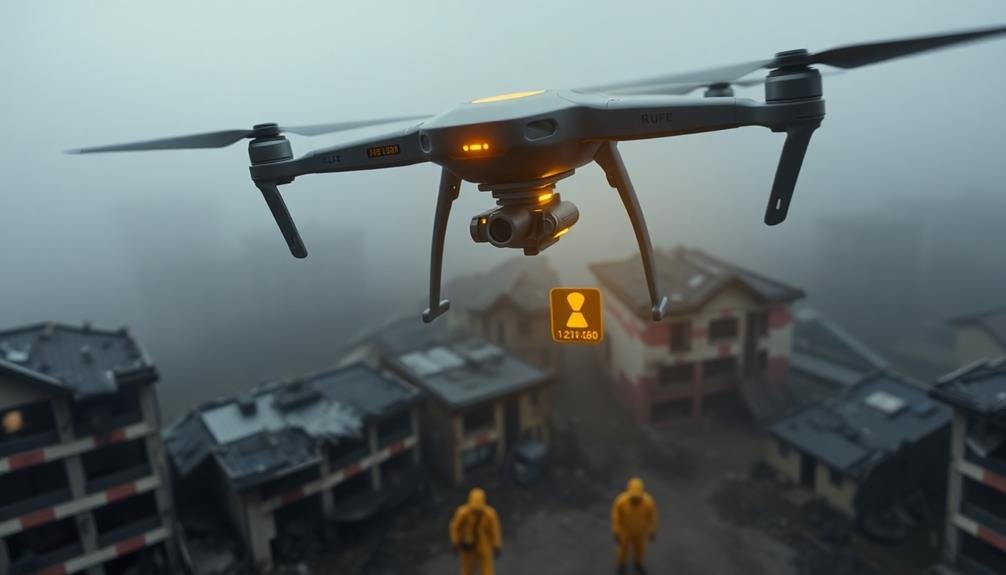
Leave a Reply